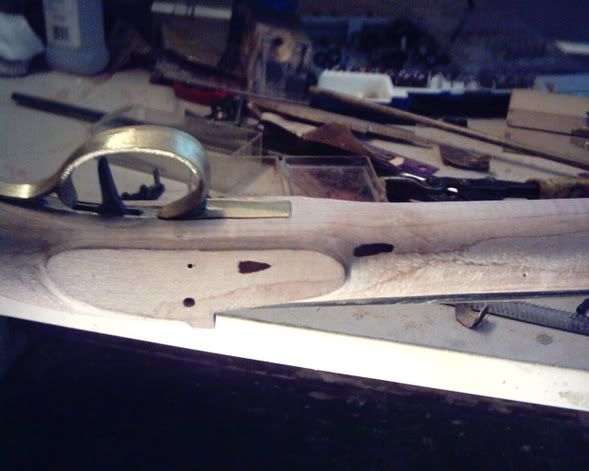J.D. said:
The only time I have used this technique, I began with about 1/4 inch thick piece of wood for the plug, and clamped it in place over the damaged area. This was for a shallow inlet. The point of an exacto knife was carefully run around the inlay using the taper on the plug as a guide, and making the cut deep enough to fill the damaged area.
The wood inside the cut removed and the inlay gently tapped in place, and the shiney edges of the cut scraped. The process was repeated until a good fit was made.
There is no need to get a perfect fit on the bottom. The rough bottom of the hole and a rough surface on the bottom of the plug help the glue to hold better.
This was the way Kieth Neubraur explained the process to me over twenty-five years ago.
Keith was a whiz in antique restoration, and this technique works. Gotta have good light to see the shine though.
Keith used this technique to repair an an area in the butt of an original Hawken where someone had inlet a very large coin. The coin was missing so the owner brought the gun to Keith. He inlet several overlapping inlays into the stock, all but removing all trace of the offending damage.
With a slightly thicker inlay, a little wood can be sanded off the bottom to create a slightly wider inlay, if gaps are apparent before the inlay is glued in place.
A little burnt umber pigment mixed with the glue, and the stock stained to match, will help the repair to become invisible.
I have been told, though I haven't tried it, that dampening the stock, and, or the plug before gluing in place, will expand the wood and make an invisible repair. Once the wood is dried and stained, especially with an oil based stain, then sealed, the moisture in the repair is supposed to stablize. I don't know about this last part, as I have never tried it.
This technique is worth experimenting with, as in practicing on scrap wood, since if done properly, the repair is almost invisible....and we all make mistakes.
J.D.







